If data is the new gold, artificial intelligence is the new god. At least MG cheekily alludes to this with a robot atop the dashboard where idols typically reside. More telling, however, is despite the Astor being essentially a petrol version of the ZS EV, it bears no badges indicating this, and instead, it proudly flaunts ‘AI Inside’ and ADAS monikers. A sign of the times, but that’s not to say there’s little to talk of the engines.
To battle the likes of the Creta and Kushaq mid-size SUVs that it will go up against, MG offers a choice of two petrol units: a 1498cc naturally aspirated engine developing 110hp and 144Nm, and a more powerful, 1349cc turbocharged engine that churns out 140hp and 220Nm. The 1.5 has a 5-speed manual gearbox and an 8-step CVT automatic, while the Turbo is available with only a 6-speed torque convertor auto. And while competitors like the Creta and Seltos also offer a diesel, the Astor will make do with petrol power only, just like the Kicks, Taigun and Kushaq.
MG Astor: exterior
Along with the motor swap, there’s also a styling update and refreshed interior. The facelift is minor and the Astor does resemble the ZS EV with the same horizontal stance, unlike the more vertical upright look of SUVs like the Seltos and Creta. Interestingly though, the Astor is taller, wider and longer than both aforementioned SUVs.

While the update is based on the international model’s recent facelift, there are India specific tweaks – like the grille design. This hexagonal 'Celestial' grille looks quite neat with its outwardly radiating pattern and is quite eye-catching. The front bumper is also new and has a mild tweak to its styling with reshaped fog light housings and it also accommodates new headlights with LED Daytime Running Lights (DRLs).
At the side, things are much the same with the only change being new patterned 17-inch alloys and red front and rear disc brakes calipers. At the rear, the new segmented lighting signature looks particularly attractive and the new bumper gets faux dual exhaust outlets and a stylised diffuser. The tailgate also gets a host of badges with the MG logo as well as ZS, Astor and ADAS lettering.
MG Astor: interior
As soon as you step inside you know MG has put a lot of effort into cabin quality. The interior feels upmarket with a generous use of soft-touch materials and brushed aluminum accents. The quality of the dashboard’s leatherette wrapping is very good with a neat and tightly skinned surface. There are three interior colour schemes on offer – dual-tone Sangria Red, dual-tone Iconic Ivory and Tuxedo Black; and while the red may appear like a lot, in the flesh it looks classy, thanks to a deeper shade used.

Compared to the ZS EV, you also now sit in a more natural position at the rear, unlike the EV’s knees-up posture which was on account of the raised floor to accommodate the batteries. The rear of the Astor also has AC vents, dual USB ports and a flip down armrest.
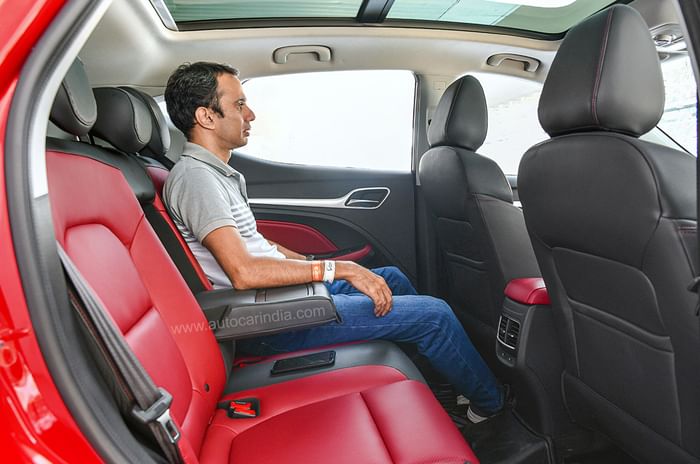
The dashboard is similar to the ZS EV with the same attractive looking outer circular AC vents, but it now houses a new larger 10.1-inch touchscreen infotainment system. The centre console now sports a gear lever. The steering wheel feels nice to hold and the flattish bottom and perforated wrap looks premium.

The colour coordinated seats are comfortable to sit in. For my narrow frame the front seats are broad, so larger folks will find it comfortable too. The only downside is that they aren’t cooled and that’s something we’ve come to expect in this segment. MG has also omitted a few other now-common features like a branded audio system, auto-dimming rear view mirror, wireless charging and rear sun blinds. However, it does have other goodies like a large panoramic sunroof, automatic climate control, rain-sensing wipers, 7.0-inch digital instrument cluster, 6-way electrically adjustable driver's seat, heated ORVMs, a rather thoughtful USB port in the rear view mirror to power a dashcam, a full- fledged level 2 ADAS set-up, connected car tech and, of course, the robot atop the dashboard.
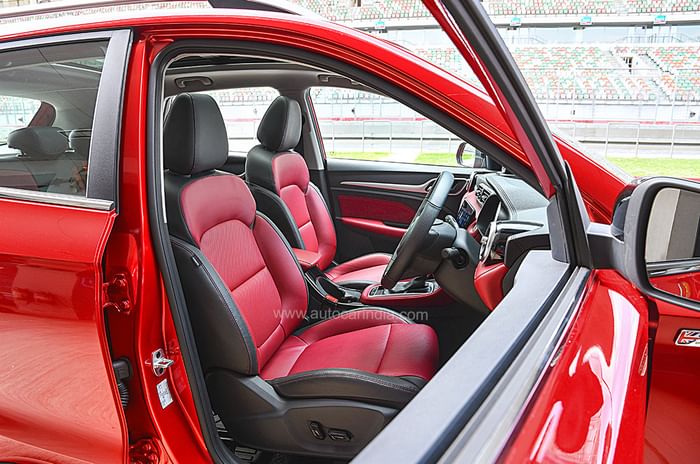
Opinion about the little bot will be divided with some finding it cute and others gimmicky. It’s fun and entertaining, but it’s only used to create emojis, I wish it were put to further use with, perhaps, analogue clock faces, a compass or even off-road displays like an inclinometer. The system also does not use Alexa, Google or Siri, and thus isn’t as versatile; still it can pull info from Wikipedia and it understands Hindi and English and has on-board voice commands for controlling car functions like adjusting the temperature. In our time with it, the voice commands worked well, though looking up info on assorted topics got mixed results with it depending largely on how you structured your sentence and your choice of words. A point to bear in mind though is that MG says we will see more capabilities with time as the company will update its software suite.
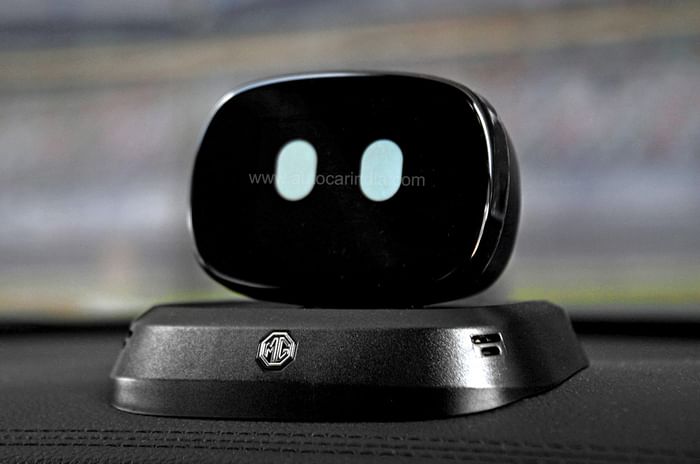
The touch screen looks great and the new larger unit has a neat layout, connectivity includes Android Auto and Apple CarPlay and it has on board a host of local apps. The touch response is also nice, but two-finger commands like pinch to zoom aren’t smooth and easy. The screen resolution is also good, but the 360 degree cameras aren’t up to the same mark. The 7.0 IP also has a neat layout and, unlike some units that are too garish, the info here is nicely laid out and easy to read.
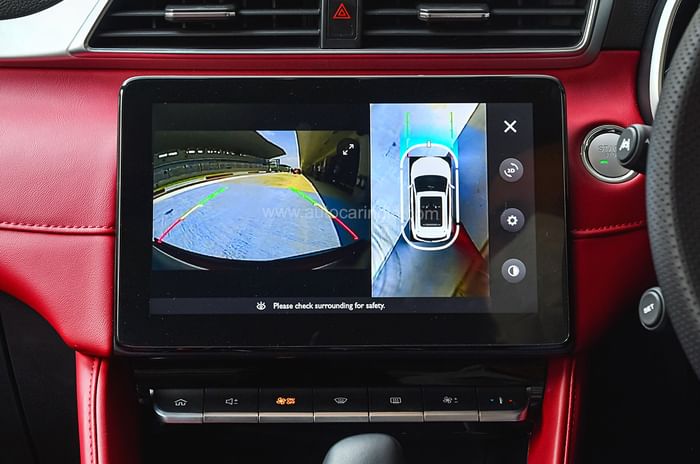
The connected car tech has all the expected features like geo-fencing and pre-cooling, but it takes it a step further with a digital key that you can install on your phone. With this you can fully operate the car with just your phone and not have to use the actual key fob.
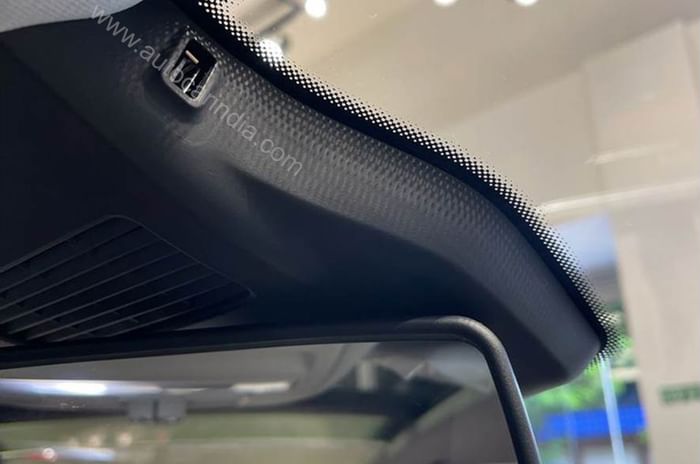
MG Astor: performance
Carrying on with tech, there is the level 2 (hands-on, partial driving automation) ADAS or Advanced Driver Assistance System. The system uses both radar and camera input unlike the camera only set-up on the Gloster and is quite comprehensive with Lane Assistance, Blind Spot Detection, Rear Cross-Traffic Alert, Adaptive Cruise Control, Forward Collision Warning and Auto Emergency Braking with pedestrian detection, Traffic Sign Recognition, Speed Assistance, Auto High-Beam Control.
Unfortunately, MG only allowed us to drive the Astor at the Buddh F1 track, so we don’t really know how it performs in the real world. In the controlled conditions, the lane functions worked well and the corrective torque of the lane keeping assist felt very natural. Traffic Jam Assist is not available, but Adaptive Cruise Control can bring the car to a complete halt and the automatic speed variation of the ACC also feels nicely calibrated and increases and decreases in speed are quite smooth. There is also a neat add-on to the Traffic Sign Recognition where the Speed Assist set-up can automatically reduce the vehicle speed to what’s indicated on the traffic sign board. It’s a nice way to avoid an unintended speeding fine.
Onto engines, MG had only the Turbo for us to drive and our initial impressions are positive. The three cylinder unit is a bit audible inside the cabin but it feels smooth and is quick, and should deliver a time of around 11 seconds for the 0 to 100kph dash. It doesn’t feel lively though, like other Turbo petrols and it’s tuned instead for a linear and smoother feel. The 6-speed torque convertor is also much the same with a smooth and relaxed nature to its shifts, even a mash down on the throttle doesn’t give you a quick downshift. MG has gone for an overall easy going feel, and this should suit everyday driving conditions well, though we’ll know for sure when we drive it in the real world.
What was clear, however, was chassis dynamics, starting off with the brakes, the all-disc set-up delivers a strong bite and I often found myself braking early, having kept allowances for the fact that this is no track car. The strong retardation is certainly nice to have and we had no complaints about the brake pedal feel either.
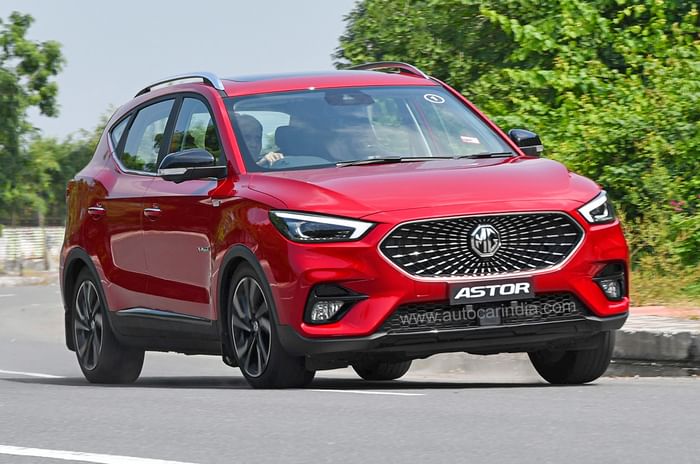
The suspension is soft sprung and it did heave over speed breakers at the track’s service roads. There is also noticeable body roll in corners, but grip is good and it will give you enough confidence for regular twisty roads. The steering feel is light and you have three modes where Dynamic makes it firmer, the setting itself is buried away in the touch screen menu, but you won’t go there often as Normal mode works well for most parts and at high speed the map automatically selects Dynamic.
MG Astor: rivals
While the Astor is another version of the ZS, it isn’t a side show to the EV. MG intends for the Astor to do well and take a sizeable chunk out of the mid-size SUV pie, but it won’t be easy. Despite all the brouhaha around SUVs, just a few months ago, the mid-size SUV segment had essentially just two options, the Creta and the Seltos; the Duster and Kicks being marginal players now. Today, however, you also have the VW Taigun and the Skoda Kushaq who, besides being very capable in their own right, are also riding high on the initial honeymoon period. And in addition to these four is also the XUV700 who with its aggressively low priced 5- seater petrols could easily tempt some into the next segment.
Should MG be worried then? Not unduly so. While this isn’t a full-fledged review, we did come away with many good impressions of MG’s new SUV. The Astor does look handsome, and the update nicely complements the ZS EV’s high-riding crossover stance. The interiors are tasteful and are arguably the classiest of the lot. And then as MG has always done, it’s leading with tech. Yes, it does sacrifice some now-common bits like ventilated seats, but other must-haves like a panoramic sunroof are on offer and the ADAS setup is quite comprehensive. And then there’s the AI bot which will prove entertaining to some. There are also two petrol engines to choose from and the turbo is well set-up for daily use and shows promise. And all this is even before you consider the pricing, which MG says will be competitive. So it’s going to be a tough battle, but like its celestial grille the Astor looks all set to burst onto the scene.










































